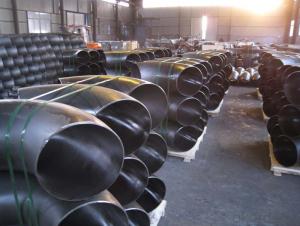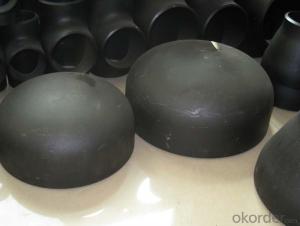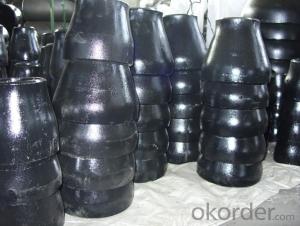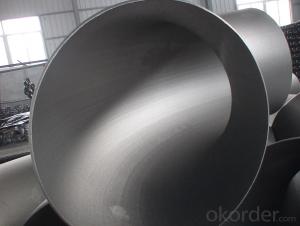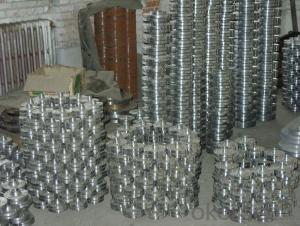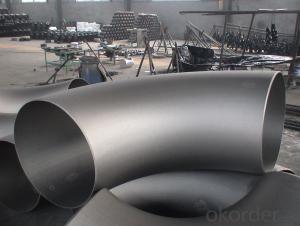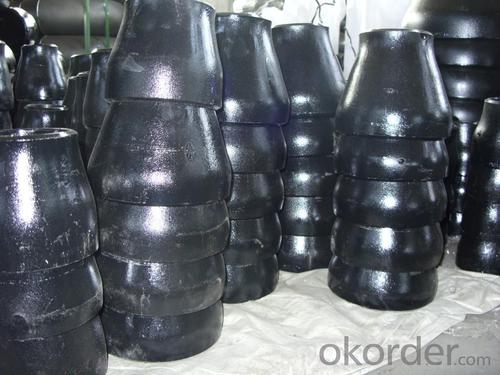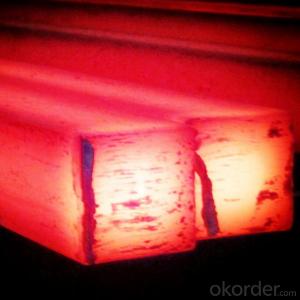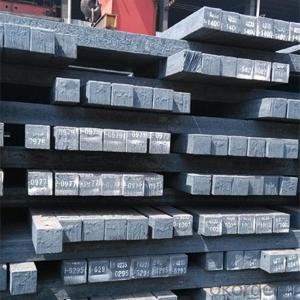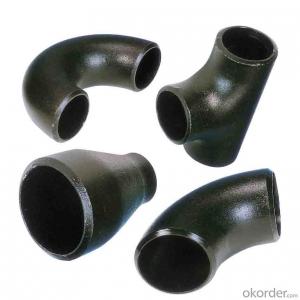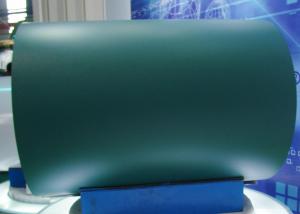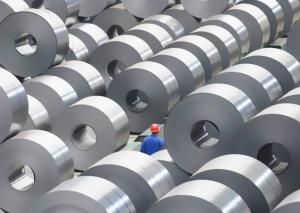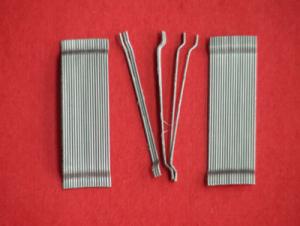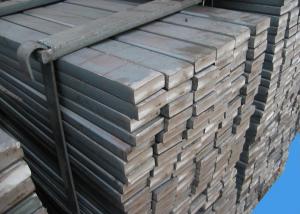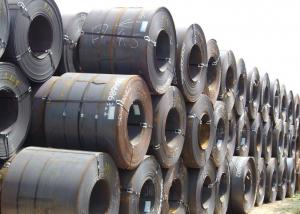Carbon Steel Pipe Fittings ASTM A234 FLANGE 2''
- Loading Port:
- China Main Port
- Payment Terms:
- TT OR LC
- Min Order Qty:
- -
- Supply Capability:
- -
OKorder Service Pledge
OKorder Financial Service
You Might Also Like
Specifications
pipe fitting elbow
Certificate:ISO:9001-2000
New material,completely meet asme and din standard
Best price
1. type: AISI ASTM A234 WPB BW Con Elbow
2. Size: 1/2"-48"(1/2"-24"is seamless and 26"-48"is welded)
3. Wall thickness: sch10-160, STD, XS, XXS
4. Material: A234WPB, A420WPL6, A420WP5, WP11, WP12, WP22, etc
5. Welding line: seamless
6. Angle of bend: 30, 45, 90, 180degree
7. Bending radius: SR, LR
8. Standard: ANSI B16.9, JIS, SB, DIN, GB
9. Surface treatment: black paint, vanis paint, black rust-proof oil,
transparent oil, hot galvanizing
10. Application: petroleum, electricity, chemical, natural gas, metallurgy,construction,
shipbuilding and other fields because of its high pressure, high temperature, etc
11. connection: welding
12. technics:forged
13.Certificate:ISO9001 - 2000, CE, SGS, etc.
14. packaging: wooden case, pallet, container or in accordance with the
requirement of customers
15. Principle: quality fist, customer first, credit first
16. payment: L/C T/T
17. delivery time: 7-25 days after payments
18. Notes: the bevel can be made in accordance with the special requirements
of the customers
19. Others: we can also produce the products according to the requirements
of the customers
The main production:
1. PIPE FITTINGS: elbows, tees, bends, reducers, cap, flanges and sockets etc.
2. PIPE: bult welded pipes, seamless pipes, threaded pipes, etc.
We sincerely welcom customers at home and abroad to visit us and seek common development.
- Q: What are the factors to consider when choosing the right steel product for a specific application?
- When choosing the right steel product for a specific application, several factors need to be considered. First, the mechanical properties of the steel, such as its strength, hardness, and ductility, must align with the requirements of the application. Additionally, the corrosion resistance of the steel is crucial, especially if the product will be exposed to harsh environments. It is also important to consider the desired formability and weldability of the steel, as well as its cost and availability. Lastly, specific industry standards and regulations should be taken into account to ensure compliance and safety.
- Q: How is steel sheet metal fabricated?
- Steel sheet metal is fabricated through a process called sheet metal fabrication, which involves a series of steps such as cutting, bending, and shaping steel sheets to create the desired product or component. This can be done using various techniques, including laser cutting, shearing, punching, and forming, to achieve the desired shape and dimensions. Welding, riveting, or fastening methods are then used to join the different pieces together, resulting in a finished steel sheet metal product.
- Q: Can steel be recycled? If so, how?
- Yes, steel can be recycled. The process involves collecting steel products, such as old vehicles or scrap metal, and taking them to a recycling facility. At the facility, the steel is sorted, cleaned, and shredded into small pieces. These pieces are then melted down in a furnace to remove impurities and create new steel. The recycled steel can be used to manufacture various products, reducing the need for raw materials and conserving energy.
- Q: How are steel tubes used in the manufacturing of furniture?
- Steel tubes are commonly used in the manufacturing of furniture to provide structural support and strength to various components. They are often used in the construction of chair frames, table legs, and other furniture pieces that require durability and stability. The versatility and robustness of steel tubes make them an ideal choice for creating sleek and modern designs while ensuring longevity and reliability in furniture manufacturing.
- Q: What are the different types of steel coils and their applications?
- There are several types of steel coils used in various applications. Hot-rolled steel coils are commonly used in construction, automotive, and general manufacturing industries due to their strength and durability. Cold-rolled steel coils are often used in appliances, furniture, and electrical equipment as they provide a smoother surface finish. Galvanized steel coils, which are coated with a layer of zinc, are primarily used in outdoor structures, automotive parts, and agricultural equipment for corrosion resistance. Lastly, stainless steel coils are used in industries requiring high resistance to corrosion, such as the food processing, medical, and chemical sectors.
- Q: What are the advantages of using steel products in the automotive industry?
- There are several advantages of using steel products in the automotive industry. Firstly, steel is known for its high strength and durability, making it an ideal material for constructing vehicle bodies and frames. This ensures enhanced safety and protection for passengers in case of accidents or collisions. Secondly, steel has excellent formability, allowing manufacturers to create complex shapes and designs for various automotive components. This flexibility in design helps to optimize the overall performance and efficiency of vehicles. Moreover, steel is readily available and cost-effective compared to alternative materials. This allows automakers to produce vehicles at a more affordable price point, making them accessible to a wider range of consumers. Additionally, steel has good corrosion resistance, which is crucial for automotive applications as vehicles are exposed to harsh environments and weather conditions. This helps to extend the lifespan of vehicles and reduces maintenance costs. Lastly, steel is a highly sustainable material as it is recyclable. This aligns with the automotive industry's increasing focus on sustainability and environmental responsibility. Overall, the advantages of using steel products in the automotive industry include strength, durability, formability, cost-effectiveness, corrosion resistance, and sustainability.
- Q: What are the different types of steel storage tanks?
- There are several different types of steel storage tanks, including welded steel tanks, bolted steel tanks, and stainless steel tanks. Welded steel tanks are constructed by welding individual steel plates together to form a sturdy structure. Bolted steel tanks are made up of pre-fabricated steel panels that are bolted together on-site, allowing for easy assembly and disassembly. Stainless steel tanks are made from corrosion-resistant stainless steel, making them ideal for storing liquids that may be corrosive.
- Q: How is steel used in the production of defense equipment?
- Steel is commonly used in the production of defense equipment due to its strong and durable properties. It is used to manufacture various components, such as armor plates, ballistic helmets, and weapon systems, to provide protection and withstand high-stress situations. Additionally, steel is also utilized in the construction of military vehicles, submarines, and aircraft carriers, ensuring their structural integrity and enhancing their overall strength and resilience.
- Q: How are steel tubes used in the fabrication of bicycle frames?
- Steel tubes are commonly used in the fabrication of bicycle frames as they provide strength, durability, and flexibility. These tubes are cut, shaped, and welded together to form the main structure of the frame, ensuring stability and support for the rider. Additionally, steel tubes allow for customization in terms of design and geometry, enabling manufacturers to create frames that cater to different riding styles and preferences.
- Q: What is the process of steel galvanization?
- The process of steel galvanization involves immersing steel in a bath of molten zinc or electroplating it with a layer of zinc to provide a protective coating. This coating helps prevent corrosion and extends the lifespan of the steel, making it suitable for various applications in construction, automotive, and manufacturing industries.
Send your message to us
Carbon Steel Pipe Fittings ASTM A234 FLANGE 2''
- Loading Port:
- China Main Port
- Payment Terms:
- TT OR LC
- Min Order Qty:
- -
- Supply Capability:
- -
OKorder Service Pledge
OKorder Financial Service
Similar products
Hot products
Hot Searches
Related keywords
